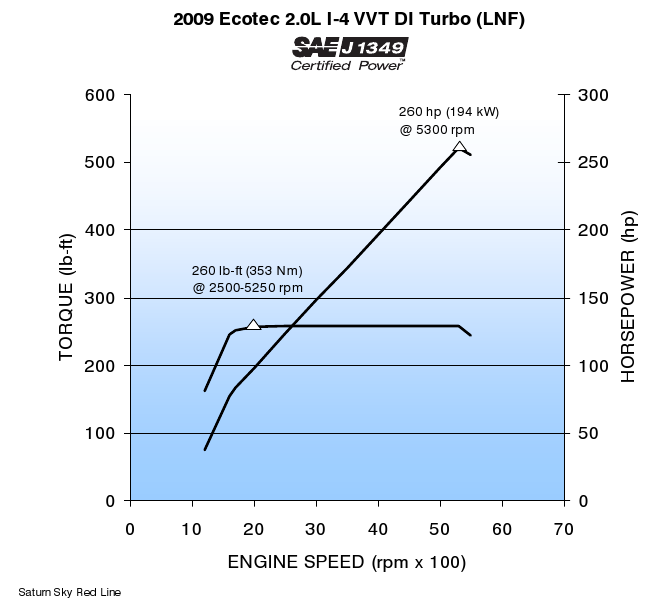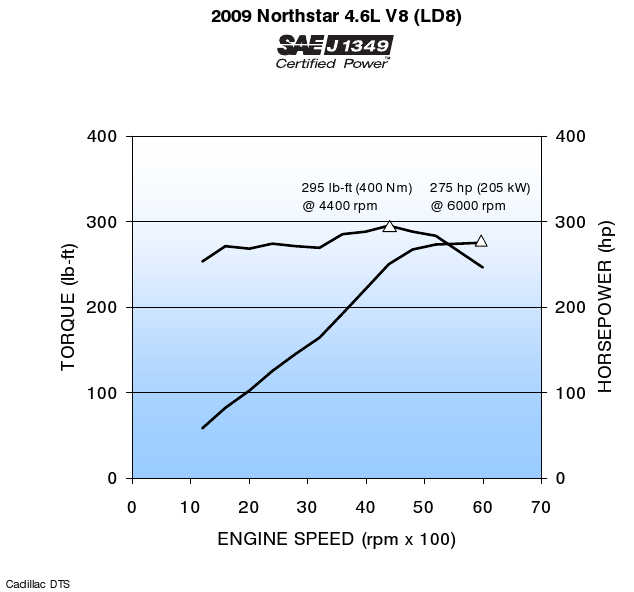The Press has been agonizing over the idea that a new future Cadillac might have a 4-cylinder engine. I addressed this a while back. However, Autonews.com had an editorial on the subject today, (subscription required), bemoaning the idea that a REAL Cadillac cannot have a 4-cylinder engine and that it would be the Cimarron all over again. All the bad things I mentioned in the previous article.
Let’s look at the facts. Here are the performance output graphs for two powerplants:
What do these show? That for a Driver, the GM Powertrain’s I4 Turbo will perform identically to the Northstar V8.
As one of my GM Engineer friends said, horsepower sells but you drive torque. Why do we WANT V8 or V12 or V16 engines? Because they give terrific torque at very low RPM very smoothly. So, especially in a large Luxury Cadillac, high torque at a low RPM means that the vehicle moves out smartly as soon as you engage the accelerator. So what is the problem with small displacement 4-cylinders? They tend not to make as much torque, and they make power higher in their RPM band. They use gearing to take advantage of the higher RPM power. But that means the power is not RIGHT THERE when I put my foot down.
How can we mitigate that? By using direct injection, high compression, and turbocharging as done with the I4 turbo. Now it puts out torque and horsepower similar to our current V8, for identical performance with better fuel economy at idle and off-power. We already have it available, in production. A new powertrain control module tune available now raises output to 280-290 hp for this engine, so it actually will be somewhat stronger than the Northstar V8 in the current DTS.
But what we WANT is that performance. It does not matter if it comes from an engine with 8 cylinders, or 6 (like my CTS) or 4 like a 1915 Cadillac or even 1 like the first Cadillacs. It matters that the engine is a precision built powerplant that provides smooth power delivery RIGHT NOW when I want to go. THAT is the definition of Cadillac. It is a premium high-precision vehicle that focuses on performance and luxury.
Bring me the new latest technology and stop worrying about change. Make a terrific Cadillac with luxury and performance and people won’t care how many cylinders it has.


